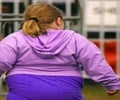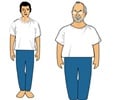Overweight and obese teens have similarly increased risks of developing heart disorders, finds a new study.

TOP INSIGHT
Overweight teens have the same predisposition or vulnerability as that of obese teens to cardiovascular diseases such as hypertension and heart failure.
The researchers divided 40 adolescents aged between 10 and 17 into two groups, each with ten boys and ten girls: an overweight group with BMI-for-age Z-scores of +1 or +2 and an obese group with Z-scores above +2. BMI is body mass index (the ratio of weight to height). Z-scores indicate the number of standard deviations below or above the population mean.
The participants performed a moderate exercise protocol, which involved walking on a treadmill at a slope of 0% and required 70% of the maximum estimated heart rate for this age group.
Heart rate variability was measured before and after the exercise session to assess the speed of autonomic cardiac function recovery. Prolonged autonomic nervous system imbalances after physical exertion have been shown to increase the risk of an acute event and future cardiovascular disease.
During the first few seconds of an exercise session, the parasympathetic nervous system decelerates cardiac function. One of the two main divisions of the autonomic nervous system, this system conserves energy by slowing the heart rate and relaxing the body in other ways. After 50-60 seconds, the sympathetic nervous system kicks in, stimulating activity such as increased heart rate via adrenalin release, that prepares the body to react to a stressful situation.
The researchers found no significant difference in heart rate variability between overweight and obese adolescents or between girls and boys.
"These findings suggest that overweight adolescents have the same predisposition or vulnerability as that of obese adolescents to cardiovascular diseases such as hypertension and heart failure, as well as to metabolic disorders such as diabetes, dyslipidemia, and high levels of triglycerides and LDL cholesterol."
The number of obese adolescents worldwide has risen sharply in the last 40 years. According to recent studies, the proportion increased between 30% and 50% per decade in developed countries in Brazil, and the prospects are the same.
Source-Eurekalert
 MEDINDIA
MEDINDIA




 Email
Email







